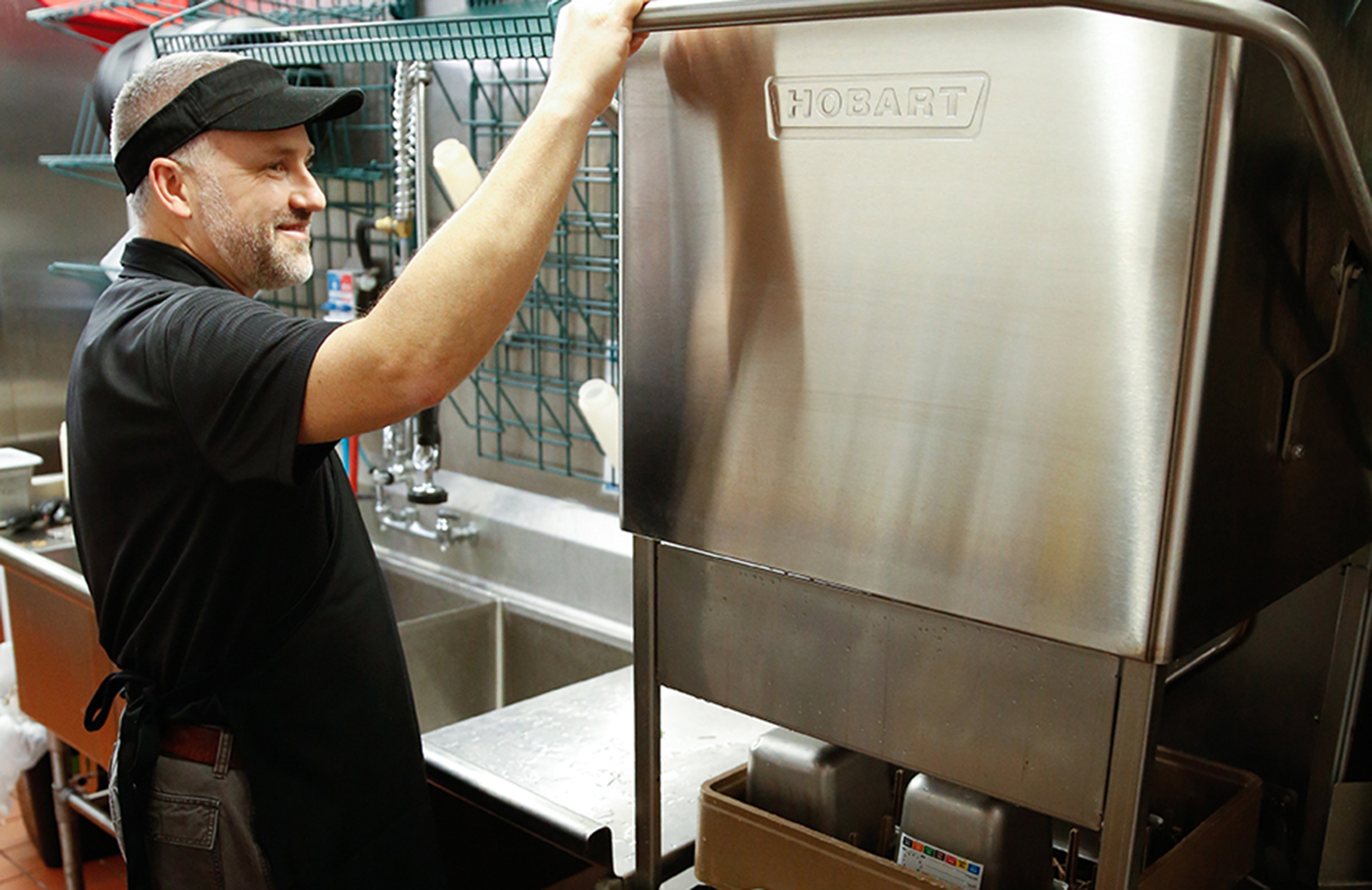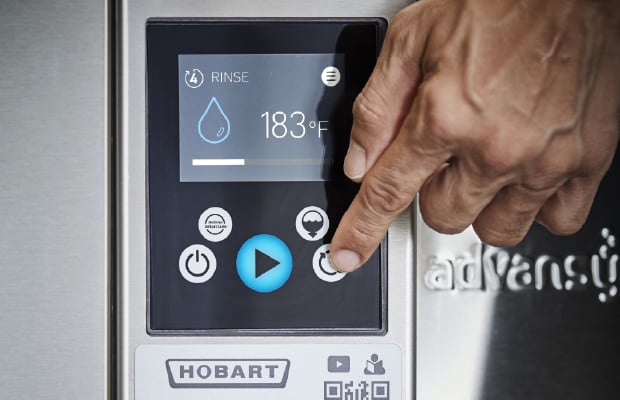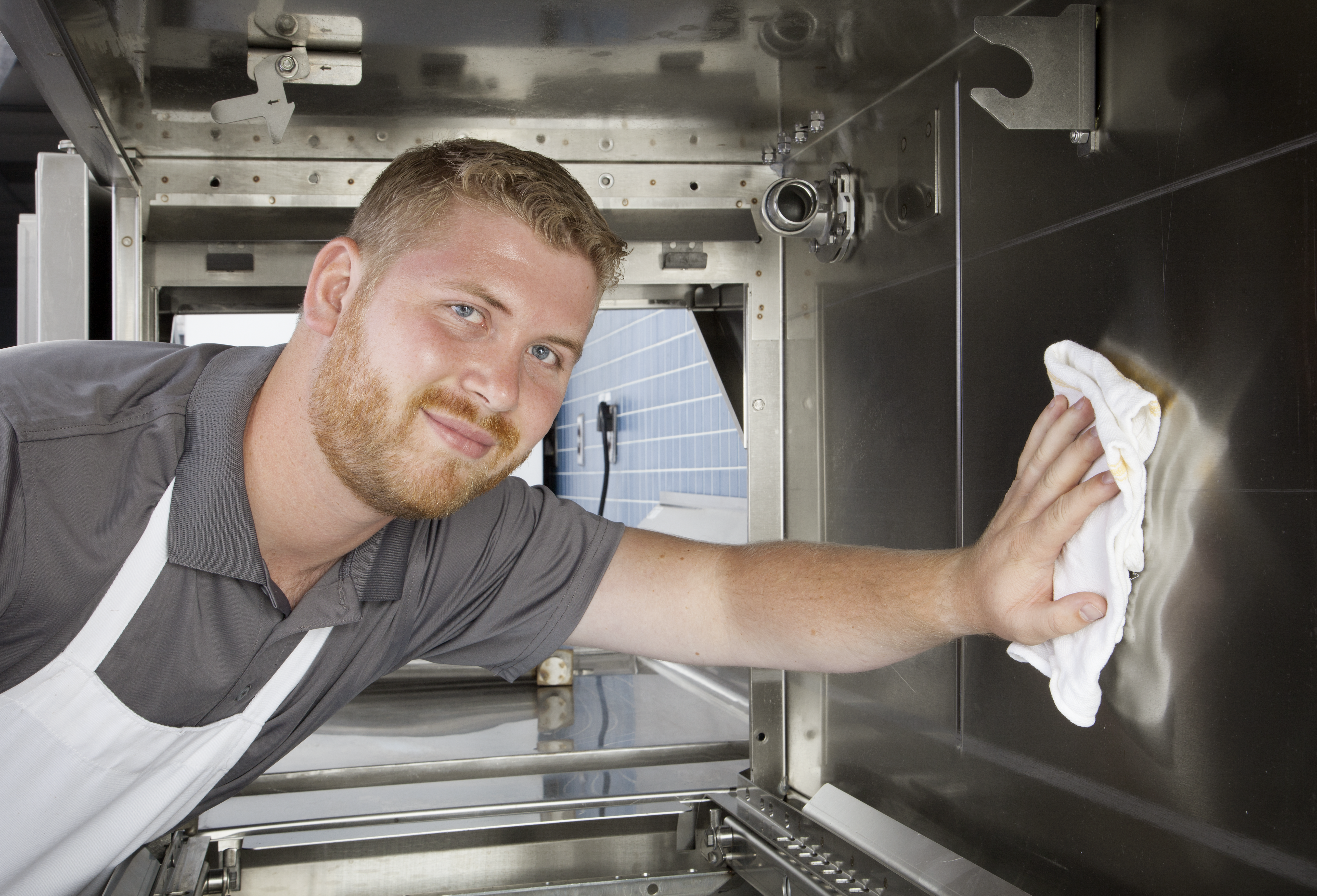It seems like a given that an automatic dishmachine would reduce labor in any situation. But just how much time can a dishmachine save? Hobart recently conducted a study to put that assumption to the test. What we found was that using an automatic dishwasher not only leads to improved productivity, but also savings in water use and improved food safety.
Labor Savings Comparisons
In our study, we compared two locations from the same restaurant chain, one that used a 3-compartment sink for all dishwashing, and one that used the Hobart AM15SCB door-type commercial dishwasher.
Our results showed up to a 40% reduction in washing time when using the automated dishwasher. Not only was less time spent washing dishes, but staff using the AM15SCB dishmachine were able to load dishes and then do other activities while the washing took place, leading to improved overall productivity.
- 3-Compartment Sink Washing: Wash sessions with the 3-compartment sink often lasted from 15–40 minutes. Most days had one session that lasted around 40 minutes and several other sessions that lasted 15–20 minutes.
- Machine Washing: During our study, most dishwashing sessions were 1–3 minutes. Staff could partially load a rack and finish loading it later, so no one person was tied up just washing ware.
Food Code Compliance
Our study also looked at two areas of compliance: wash water temperature and sanitization practices. The AM15SCB door-type dish machine provides consistent washing and sanitization and is designed with lockouts that help to prevent the machine from running if the proper temperature is not achieved or if chemicals required for sanitization are empty.
In comparison, our study found multiple issues of compliance at the site relying on hand washing in the 3-compartment sink. When using a 3-compartment sink, the 2017 FDA food codes require a minimum of 110 degrees Fahrenheit for the wash sink. During our study, 85% of the total manual washing time was below the 110 degree requirement. This was due to two factors. First, while the facility’s water heater was capable of providing water at 120 degrees, there were times when the initial wash sink fills didn’t reach 110 degrees. Second, the lag time between when the sink was filled and when staff began washing allowed the water to cool below 110 degrees.
Sanitization was also an issue. The 2017 FDA Food Code requires submersion in the sanitization sink for a minimum of 30 seconds when using a Quaternary Ammonium sanitizer, but our study found a significant amount of ware was submerged for less than the required time in the sanitization sink. Many items were dipped in and out quickly during the sanitization step with less than 2 seconds of submersion. Large items, such as sheet pans, would not be turned around in the sink, leaving them only half submerged and half sanitized. When working with other large items like cutting boards, carafes, and slicers that are difficult to fit in the sinks, many operators were observed splashing water from the sanitizer sink onto the ware, randomly hitting some of the surfaces and missing other surfaces.
Finally, while tracking operator behavior during our study we found that the wash, rinse and submerge and sanitize process wasn’t always followed in the proper order, and sometimes staff even skipped steps, including sanitization.
Clear Benefits
In our study of two locations, the results weighed heavily in favor of an automatic dishmachine in three areas:
- Labor savings. The Hobart AM15SCB dishmachine reduced daily labor time up to 40%.
- Water savings. The Hobart AM15SCB reduced water consumption by 68% compared to the 3-compartment sink. That’s a savings of almost 55,000 gallons per year!
- Food code compliance. The Hobart AM15SCB’s temperature and chemical lockouts greatly reduce the probability of user error in washing and sanitizing.
Click here to read the full manual vs. automated dishwashing case study.





.png)


%20proc%20%20(1).jpg)


